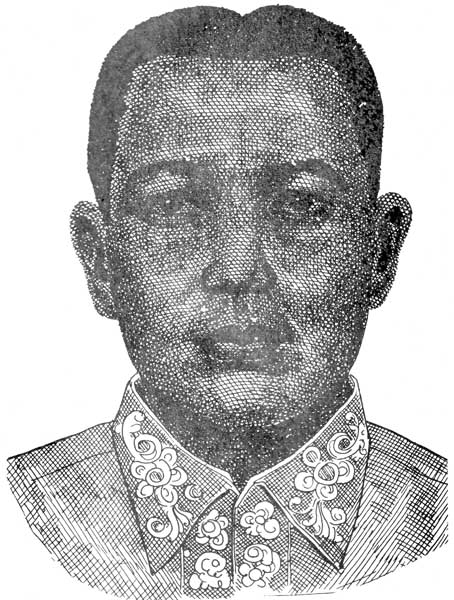- Jose Abad Santos
:"For the municipality in the Philippines, see
Jose Abad Santos, Davao del Sur .":"For the station ofManila LRT , seeAbad Santos LRT Station ."Infobox Philippine Supreme Court Chief Justice|
name=Jose Abad Santos

order=5th
term start=December 24 ,1941
term end=May 2 ,1942
predecessor=Ramon Avanceña
successor=Jose Yulo
nominator=Manuel L. Quezon
date of birth= birth date|1886|2|19|mf=y
place of birth= City of San Fernando,Pampanga
date of death= death date|1942|5|2|mf=y
place of death=Malabang, Lanao del Sur
term start2=June 18 ,1932
term end2=December 23 ,1941
predecessor2=Norberto Romualdez
successor2=Ricardo Paras
nominator2=Herbert Hoover Jose Abad Santos y Basco (
February 19 ,1886 –May 2 ,1942 ) was the 5th Chief Justice of the Supreme Court of thePhilippines . He was executed byJapan ese forces during the occupation of the Philippines inWorld War II .Abad Santos was born in City of San Fernando,
Pampanga to Vicente Abad Santos and Toribia Basco. His brother, Pedro, would eventually emerge as a leading socialist leader during the Commonwealth era. In 1904, he was sent to theUnited States as a government pensionado. He finished a pre-law course at the Santa Clara College inSanta Clara, California ; his Bachelor of Laws atNorthwestern University inUrbana, Illinois ; and his Masters of Laws atGeorge Washington University in 1909. Admitted to the Philippine Bar in 1911, he served as Assistant Attorney at the Bureau of Justice from 1913 to 1917.In 1919, Abad Santos would become instrumental in laying the legal groundwork as well as drafting the by-laws and constitution of the
Philippine Women's University , the country's and Asia's first private non-sectarian institution for higher learning for women.He was later appointed the first Filipino corporate lawyer of the
Philippine National Bank , Manila Railroad Company and other government corporations. He returned to the Department of Justice where he became Attorney-General, Undersecretary of Justice then Secretary of Justice from 1921 to 1923. In July 1923, he resigned as Secretary of Justice together with other department secretaries as a result of the controversy between Governor-GeneralLeonard Wood and Filipino leaders.Abad Santos then served as Chief Counsel of the President of the Philippine Senate and the Speaker of the House of Representatives. In 1926 he went to the United States as head of the Philippine Educational Mission. He was again appointed Secretary of Justice in 1928 and re-appointed on
July 1 ,1931 . In 1932, he became an Associate Justice of the Supreme Court. He became its Chief Justice onDecember 24 ,1941 . As part of the emergency reorganization of the Commonwealth government, Abad Santos, in his capacity as Chief Justice, was given the responsibilities previously handled by the Secretary of Justice (the position of Secretary of Justice was abolished for the duration of the war). Abad Santos accompanied the Commonwealth government to Corregidor, where on December 30, 1941, he administered the oath of office to President Quezon and Vice-President Osmeña for the second term they'd been elected to in November of that year. He also undertook, with Manuel Roxas, the supervision of the destruction of Commonwealth government currency to prevent its falling into enemy hands.When President
Manuel L. Quezon left for the United States via Australia, Chief Justice Abad Santos was given the choice to leave with him. But the latter preferred to remain in the Philippines and carry on his work and stay with his family. President Quezon appointed him Acting President with full authority to act in the name of, and on behalf, of thePresident of the Philippines in areas unoccupied by the Japanese. OnApril 11 ,1942 , he and his son Jose, Jr. were captured by the Japanese while traveling by automobile inCarcar, Cebu . He identified himself as the chief justice of the Supreme Court of the Philippines. Abad Santos and his son were then taken to a concentration camp.When asked to cooperate with the Japanese forces in the Philippines, he refused to do so. Although he had nothing to do with military operations, they imputed to him the destruction of the bridges and other public works in Cebu.
The Japanese High Command took him and his son to
Parang, Cotabato (now inShariff Kabunsuan ) in April 1942. The next day they were brought toMalabang ,Lanao , and after three days confinement at the constabulary barracks, Chief Justice Abad Santos was called to Japanese headquarters. Before he was shot to death, he was able to talk to his son Jose, Jr. His last parting words to his son were "Do not cry, Pepito., show to these people that you are brave. It is an honor to die for one's country. Not everybody has that chance." He was executed at 2:00 p.m., onMay 2 ,1942 . The date is often reported as May 7, but as as former Supreme Court Justice Ramon C. Aquino, Abad Santos' biographer put it, "At first it was thought that Abad Santos had been killed on May 7, 1942. This was the date given by Pepito himself during his testimony at the trials of Generals Hayashi and Kawaguchi. But on the basis of Fukui's testimony supported by notations in his diary, the date of Abad Santos' execution was definitely ascertained to be at two o'clock on the afternoon of May 2, 1942." (p. 215)References
* Aquino, Ramon C. (1985) "Chief Justice José Abad Santos 1886-1942: A Biography" Phoenix Publishing House, Quezon City
External links
* [http://www.geocities.com/sinupan/AbadSJ.htm http://www.geocities.com/sinupan/AbadSJ.htm]
* [http://www.geocities.com/balen_net/biographies.htm http://www.geocities.com/balen_net/biographies.htm]
* [http://philippinesfreepress.wordpress.com/2006/04/11/last-decision-november-30-1946/ Last decision, November 30, 1946 « The Philippines Free Press Online ] at philippinesfreepress.wordpress.com
* [http://philippinesfreepress.wordpress.com/2006/04/11/a-problem-in-philippine-history-april-12-1947/ A problem in Philippine history, April 12, 1947 « The Philippines Free Press Online ] at philippinesfreepress.wordpress.com
Wikimedia Foundation. 2010.
